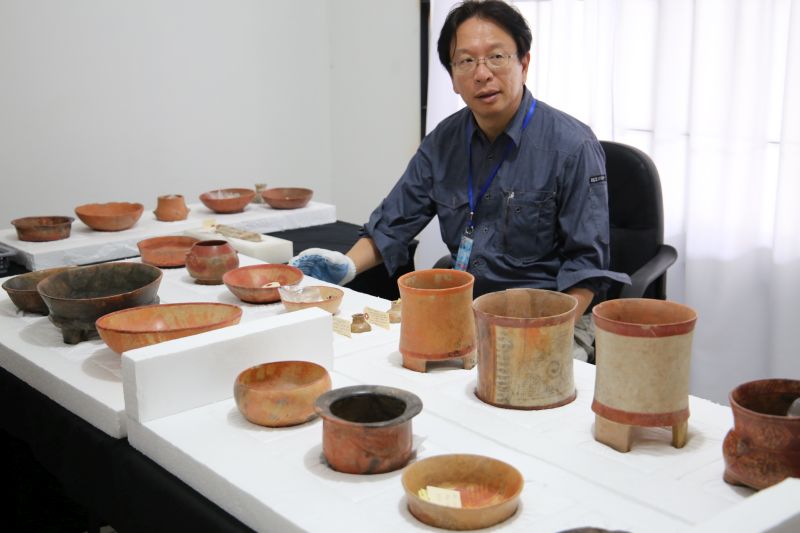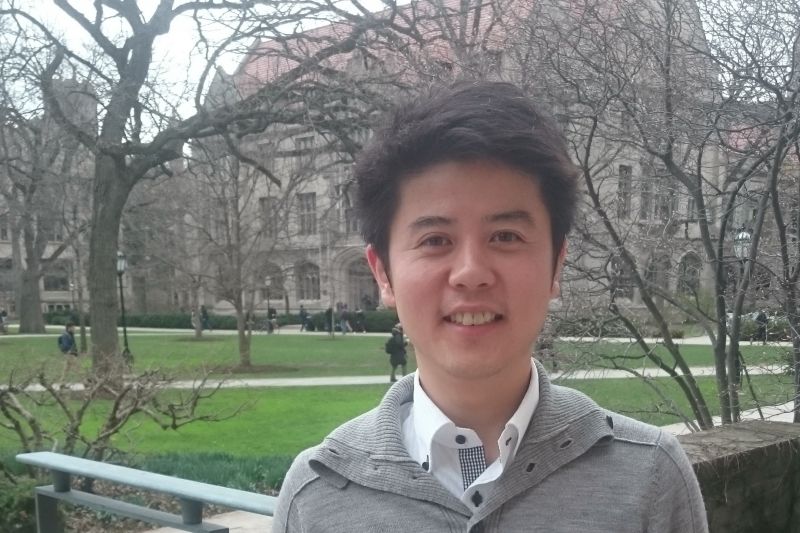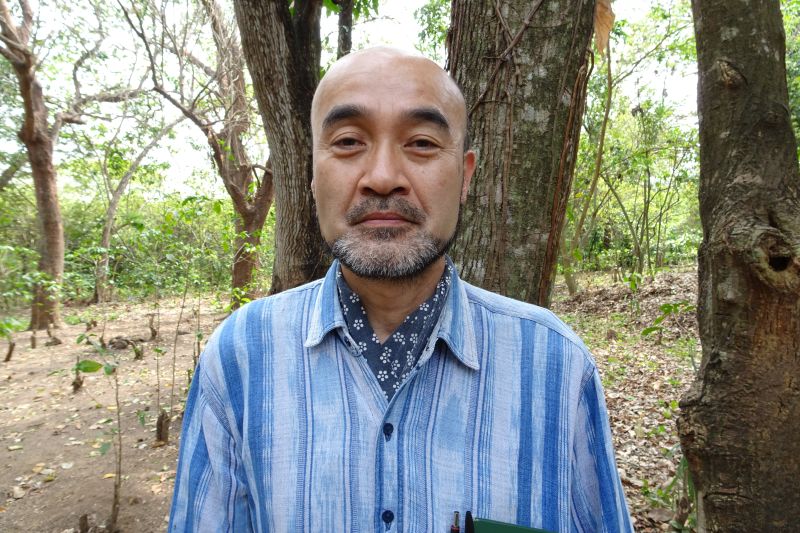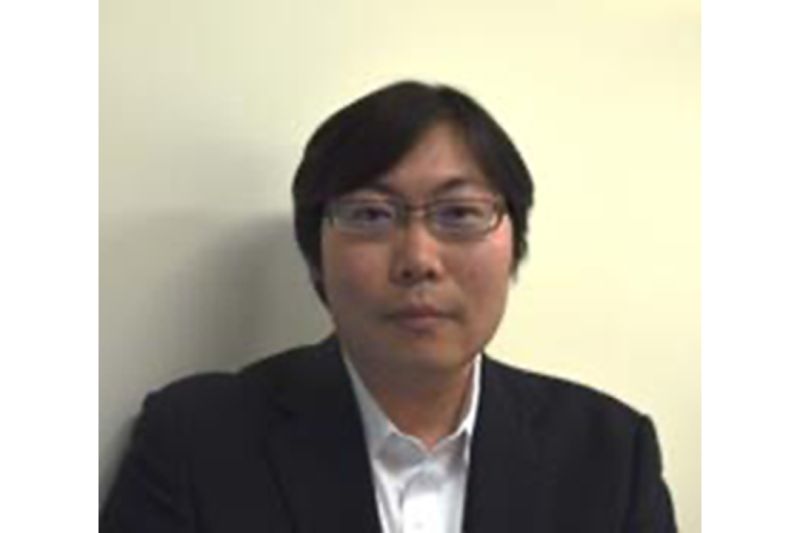Principal Investigator

NAKAMURA Seiichi
Affiliation: Director, Research Center for Next Generation Archaeological Studies / Special Recruited Professor, Graduate School of Sustainable Systems Science, Komatsu University
Researcher Number: 10261249
Summary of Research to Date
In 1983, I traveled to Honduras for the first time to begin field research on Maya civilization as a member of Japan Overseas Cooperation Volunteers in the field of archaeology, which is a part of Japan International Cooperation Agency (JICA). After a year of preparation, we started an archaeological project in La Entrada, an area on the periphery of Copan, about 50 km in a straight line from the World Heritage "Maya Site of Copan”. For the next 16 years, with funding from JICA and private foundations, I immersed myself in the investigations of major archaeological sites in the La Entrada region, such as El Puente, Los Higos, and Las Pilas, and became fascinated with the peripheral archaeology of Maya civilization, which no one had ever investigated in history, and where new and diverse archaeological sites could be found one after another.
A turning point came in 1999 when I was appointed by the Honduran government as the director of the Integral Program for Conservation of Copan Archaeological Park (PICPAC). For 24 years from that time to the present, I have concentrated on research and study of the World Heritage "Maya Site of Copan" in Honduras; please see "Digging for Maya Civilization: The Story of the Kingdom of Copan" (NHK Books 1086), which summarizes my research until around 2002.
I could have made three major discoveries in Copan archaeological history: the 10J-45 "Royal Tomb" in 2000, the burial of a "Royal Child" in 2003-2004, and the elite group burials in 2016-2017. All were reported in major magazines (Antiquity, National Geographic, Time, etc.) and newspapers/news (BBC, CNN, NHK, etc.). Comparative studies of the funeral potteries from these three important burials and intensive radiocarbon dating over the past five years suggest that they are nearly contemporaneous and date to the first half to mid 5th century, when the Copan dynasty was founded, according to the established theory. If this is the case, the identity of the burial in 10J-45 "Royal Tomb," which is said by isotopic analysis to be a foreigner from the Petén Lowlands, and the interrelationship between these three burial groups are important issues in the study of the first half of the Copan dynastic history.
At the same time, I have been simultaneously conducting archaeological research at the Tikal site (Tikal National Park, a Mixed World Heritage Site in Guatemala), which is considered to be the center of the Maya civilization at its peak. The link between Tikal and Copan has been pointed out by various Mayanists since the first half of the 20th century. At Tikal, we have collaborated with the Guatemalan side in a project centered on the preservation of the North Acropolis, an architectural complex in the center of the ancient city. This was the main research area when the Museum of the University of Pennsylvania conducted an unprecedented archaeological project in Tikal between 1956 and 1969, where the restored structures were exposed for tourism purposes, and the subsequent erosion and weathering had severely damaged the structures, so new conservation work was needed. During the Pennsylvania Tikal Project (PTP), three of the four temples located in front (south) of the North Acropolis (5D-32 to 5D-34) were excavated, and royal tombs were discovered in each of the temples, suggesting that this was a mass burial site (necropolis) of the Tikal rulers in the Early Classic period.
Currently, we are working with Tikal National Park to conserve and reinforce the fourth temple, named 5D-35 (Temple 35), which is located in front (southwest) of the North Acropolis and is about 10 meters above the Gran Plaza, and the small-scale excavation prior to the restoration is being conducted jointly with Tikal National Park. Despite the small-scale excavation, the 2022 season have uncovered important discoveries such as a fragment of inscribed stela for the first time since 1994, a period of 28 years at Tikal and a deposit of a group of obsidian and chert “eccentrics” at this structure. Therefore, we believe that it is highly likely that a "royal tomb" will be found in this temple as well as other three temples excavated by PTP in 1960s.
According to the established theory of Maya civilization studies, the founder of Copan Dynasty is considered to have originated from Tikal, and a detailed comparative study of important archaeological materials discovered in Copan from the founding period of the Copan Dynasty and archaeological materials from Tikal from the same period is also an important issue for the near future.
Relevance to this study
I have spent most of my research life living and conducting research in the area. I have lived in Japan only for the past 10 years or so, since moving to Kanazawa University. This has allowed me to be at the forefront of research on the Maya civilization over the past 40 years, and to witness and experience the innovations of this research for myself.
There have been two major periods of innovation in the study of the Maya civilization. First and foremost is the revolutionary deciphering of inscriptions in Copan that began in the mid-1980s. The seeds of this revolution were planted in Palenque in the 1970s, but I will never forget the excitement and the surge of the times as Linda Schele, Nikolai Grube, David Stuart, and others revealed history through new decipherments, one after another, right before our eyes.
Next would be the advances in isotope chemistry in the 2000s. Stable isotope ratios of strontium and oxygen have made it possible to distinguish between immigrants and native peoples, adding a new dimension to the history reconstructed from deciphering inscriptions. At the same time, there were discrepancies between the decipherment of inscriptions and the results of isotope analysis, presenting researchers of Maya civilization with a new challenge.
In the midst of these swells, my archaeological projects in the field are always in motion, and while the number of new sites we have discovered is large, the amount of basic primary archaeological materials (complete burial potteries, stone tools, jade objects, shell and other decorative objects, mosaic stone sculptures, buried human bones, etc.) that we have recovered is vast. To date, more than 250 burials have been discovered and recovered from Copan and its surrounding areas, and the number is increasing every year. Therefore, I believe that the third research innovation that will receive a great deal of attention in the future is paleogenomics.
Until recently, it was believed that it would be impossible to extract human-derived nuclear DNA to analyze large amounts of genomic information from paleo human bones recovered from archaeological sites in humid subtropical climates and soils, such as those in which the Maya civilization flourished. However, a young research collaborator (GAKUHARI Takashi) and a young co-investigator (NAKAGOME Shigeki) in this study are boldly taking on this difficult challenge and opening up new research horizons. We are convinced that the technological innovation of young genome researchers will enable us to conduct unprecedented research with the help of the primary source materials of more than 300 unique archaeological bones recovered by the principal investigator (NAKAMURA Seiichi) and other research members (ICHIKAWA Akira, and ITOH Nobuyuki) through excavations in Copan and its surrounding areas.
Aspirations for this research
One of the strengths of this research team is the large amount of primary source material with clear basic archaeological information (provenience, context, and relative dating by ceramic chronology with absolute dating by C14). With world-renowned Maya archaeologists (ICHIKAWA and ITOH) and up-and-coming young genome researchers (NAKAGOME and GAKUHARI) as co-researchers and collaborators, I hope that this research will be a pioneering study that will lead to a third innovation in Maya civilization studies.
the Grants-in-Aid for Scientific Research(KAKENHI)
Project: Elucidating the dynamics of the Copan dynasty in the Maya civilization through paleogenomics
Project Number: 22H04928
Project Period (FY): 2022-04-27 – 2027-03-31
https://kaken.nii.ac.jp/en/grant/KAKENHI-PROJECT-22H04928/
Publication
- Nakamura, Seiichi 2023, ”Reseña del Proyecto Arqueológico La Entrada (Primera Fase 1984-1989, Segunda Fase 1990-1994)”, In Seiichi Nakamura, Takuro Adachi and Masahiro Ogawa (eds.), Japanese Contributions to the Studies of Mesoamerican Civilization(Studies in Ancient Civilizations 1), Institute for the Study of Ancient Civilizations and Cultural Resources, pp. 1-7.
- Nakamura, Seiichi, Takuro Adachi and Masahiro Ogawa 2023, Japanese Contributions to the Studies of Mesoamerican Civilization (Studies in Ancient Civilizations 1), Institute for the Study of Ancient Civilizations and Cultural Resources.
- Moritani, Kimitoshi, Tsuruma Kazuyuki, Nakamura Seiichi, "Kodai Iseki Daizukan (The Illustrated Book of Ancient Ruins), Newton Press.
- Nakamura, Seiichi, Melvin Fuentes, Masahiro Ogawa, Carlos Carbajal (2021), PROARCO II : Objectives, Justification, and Preliminary Results (Kanazawa Cultural Resource Studies 28) , Seiichi Nakamura (ed.), Center for the Ancient Civilizations and Cultural Resources, Kanazawa University.
- Nakamura, Seiichi (2021), “Some issues concerning the classic rulership at Copan of Maya Civilization”. In Archaeology in the Hokuriku region and the World , pp. 319-322. (in Japanese)
- Nakamura, Seiichi (2021), “Utilization of cultural heritage and regional society” (2-20), “Searching for the ancient America by Japanese researchers” (17-5). In Cultural Encycropidia of Latinamerica , Maruzen, Tokyo. (in Japanese, co-author)
- Suzuki, Shintaro, Seiichi Nakamura and Douglas Price (2020), “Isotopic proveniencing at Classic Copan and in the southern periphery of the Maya Area: A new perspective on multi-ethnic society”. Journal of Anthropological Archaeology 60: 1-17.
- Nakamura, Seiichi (2020), “International cooperation project utilizing archaeological sites in Central America: Case studies in Guatemala and Honduras”. In Cultural Heritage and SDGs II – What is told now in the world? , pp. 32-45. Japan Consortium for International Cooperation in Cultural Heritage.
- Nakamura, Seiichi (2020), Proyecto Arqueológico Copán (PROARCO): Investigaciones Arqueológicas en los Grupos 9L-22 y 9L-23, Copán, Honduras, Vol.3 (Kanazawa Cultural Resource Studies 25) , Seiichi Nakamura (ed.), Center for the Ancient Civilizations and Cultural Resources, Kanazawa University.
Co-Investigator

NAKAGOME Shigeki
Affiliation:
Visiting Associate Professor, Institute for the Study of Ancient Civilizations and Cultural Resources, Kanazawa University
Assistant Professor, School of Medicine, Trinity College Dublin
Researcher Number: 40625208
Summary of Research to Date
I have gained my expertise in population genetics, and my research aims to decode the complex history of human populations based on genomic data. The main approach that we have been taking is to is to use modern genomes for making an inference on the human past. However, recent advances in genomic technologies have made it possible to use DNA left in archaeological remains for generating genomic data from individuals who died several hundreds or even thousands years ago. This is a remarkable resource of time capsule that contains genetic information; direct observation of genetic variation in the past has opened up new avenues for untangling key processes in human history. My team will lead the analysis and methodological development of paleogenomic data.
Relevance to this study
Applying paleogenomics to ancient humans from Copan and archaeological sites in El Salvador and Guatemala, we will trace the rise and fall of the Maya.
Aspirations for this research
I am very excited with this opportunity to work with world-leading researchers and pioneer paleogenomics in the Maya civilization. Genomic data from this research will be unprecedented and provide novel insights into the Maya.
the Grants-in-Aid for Scientific Research(KAKENHI)
Project: Population genomics of Jomon: elucidating adaptive evolution in ancient hunters and gatherers and its legacy in modern populations
Project Number: 22H02711
Project Period (FY): 2022-04-01 – 2025-03-31
https://kaken.nii.ac.jp/en/grant/KAKENHI-PROJECT-22H02711/
Publication
- Cooke et al. (2021) “Ancient genomics reveals tripartite origins of Japanese populations”, Science Advances 7(38): eabh2419.
- Nakagome et al. (2019) “Inferring the model and onset of natural selection under varying population size from the site frequency spectrum and haplotype structure”, Proceedings of the Royal Society B 286(1896):20182541.
- Lindo et al. (2016) “Model-based verification of hypotheses on the origin of modern Japanese revisited by Bayesian inference based on genome-wide SNP data”, Nature Communications 7(1): 1-11.

ITO Nobuyuki
Affiliation: Assistant Professor, Graduate School of Humanities Department of Humanities, Nagoya University
Researcher Number: 40273205
Summary of Research to Date
In the Guatemala interdisciplinary Investigation from 1991 to 1994, excavations were conducted at Kaminaljuyu, the largest urban site on the Pacific coast of southeastern Mesoamerica. A number of burials were also found during the survey. Among these, there were human bones presumed to have been sacrificed because of the wounds. The Chalchuapa Archaeological Survey conducted in 1997-1999 revealed the history of ancient Mesoamerican pyramid temples. During the 2004-2006 archaeological survey of the ruins of Tazumal and Los Naranjos, I researched the formation of ancient cities with research representative Seiichi Nakamura. Burials of high-ranking figures were also unearthed at the Tazumal site. In the Grant-in-Aid for Challenging Research (exploratory) “Research to interpret DNA from a cultural anthropological perspective” conducted from 2017 to 2019, I conducted a survey together with a DNA analysis researcher and a cultural anthropologist from El Salvador. As a result, the indigenous people of El Salvador may be immigrants from central Mexico. In addition, we have clarified that the long-count calendar spread in ancient Mesoamerica was very widespread and early from the oldest Mesoamerican dated stele excavated from the El Trapiche area of the Chalchuapa site, which is currently being carried out.
In this study, we extracted a large amount of genetic information from the ancient human skeletal remains we excavated to verify the history inscribed on the monuments and to explore the genealogy of individuals such as "kings," "queens," and "royal children" to elucidate the historical dynamics of the Copan Dynasty, one of the most representative ancient city states of the Maya civilization.
Aspirations for this research
I would like to elucidate the relationship between dynasties such as Copan (Honduras) and Tikal (Guatemala), which have their own rulers in the Maya civilization, and ancient city kingdoms in western El Salvador using the method of paleogenomics. In particular, Copan is said to have a close relationship with western El Salvador, and it is expected that not only cultural exchanges elucidated from architectural remains and relics but also human exchanges will be elucidated by genome information. I would like to elucidate human migration by comparing the genome information of human bones that have been obtained so far with burials from the Copan ruins.
Publication
- Ito, Nobuyuki “Linaje de trono en Mesoamérica: desde los olmecas hasta los mayas.” Perspectivas Latinoamericanas 18: 61-87、2022
- 伊藤伸幸(監著)、『メソアメリカ文明ゼミナール』、勉誠出版、東京、2021.
- Ito, Nobuyuki "La arquitectura de tierra en Mongoy y Chay, Kaminaljuyu.", en Arquitectura de Tierra Mesoamericana, editado por A. Daneels, pp.121-165, UNAM, México, D.F., 2020.電子書籍

ICHIKAWA Akira
Affiliation: Associate Professor, Institute for the Study of Ancient Civilizations and Cultural Resources, Kanazawa University
Researcher Number: 90721564
Summary of Research to Date
I am a Mesoamerican archaeologist. Most of my archaeological fieldwork has been in El Salvador for examining the role of outlier groups in Mesoamerican civilization. My most recent research focused on understanding human-environmental interactions, especially human responses to long-term volcanic activities during the pre-Hispanic period, climate change, and the Classic collapse through chronology-building. Additionally, I have an interest in the study of ancient technology and labor organization. I have worked on developing conservation techniques for vulnerable, earthen architectural heritage. During this process, through collaborative work with local people we tried to create a new value for archaeological sites in the local community, for the sustainable preservation of those sites and utilization of cultural heritage.
Relevance to this study
Many scholars have pointed out that the ancient cities in El Salvador and the Copán dynasty, which is the main focus of this research, could have had intimate interaction, which is indicated by the similarities in their material culture. However, the information on these similarities is not sufficient to establish the kind of interaction that actually took place. To clarify this issue, I provide ancient human bones found in the excavations that I directed in El Salvador. These bones will be analyzed through the paleo-genome analysis method. This study will clarify the genetic relationship among the people of Copán and ancient El Salvador, and will enable elucidation on the social structure of both regions.
Aspirations for this research
The archaeological sites targeted by this research are located in several countries. However, although there were no national borders in ancient times like today, there have been a few active research exchanges among experts from different countries. This time, with the opportunity to conduct joint research across countries, I believe that the research on the southeastern marginal region of the Maya civilization will progress substantially.
the Grants-in-Aid for Scientific Research(KAKENHI)
Project: Climate Change, Commoner, and the Classic Period Collapse in Mesoamerica
Project Number: 21H00592
Project Period (FY): 2021-04-01 – 2026-03-31
https://kaken.nii.ac.jp/en/grant/KAKENHI-PROJECT-21H00592/
Publication
- Ichikawa Akira. Human responses to the Ilopango Tierra Blanca Joven eruption: excavations at San Andrés, El Salvador. 2022. 96. 386. 372-386
- Ichikawa Akira. Monumental Structures and Volcanic Activities: Excavating the Campana at San Andrés in the Zapotitán Valley, El Salvador. 2022. 33. 1. 135-154
- Ichikawa, Akira. Conservación de arquitectura de tierra en San Andrés, El Salvador. Arquitectura Mesoamericana de Tierra Vol.II. 2021. 319-343
- Ichikawa, Akira, Juan Manuel, Guerra Clara. Arquitectura de tierra en la frontera sureste Maya: San Andrés en el valle de Zapotitán, El Salvador, C.A. Arquitectura Mesoamericana de Tierra Vol.II. 2021. 213-246
- Akira Ichikawa. Warfare in Pre-Hispanic El Salvador. Annual Papers of the Anthropological Institute. 2021. 12. 178-196
Collaborator

GAKUHARI Takashi
Associate Professor, Institute for the Study of Ancient Civilizations and Cultural Resources, Kanazawa university
Researcher Number: 70749530
Summary of Research to Date
Human and animal remains excavated from archaeological sites around the world preserve a vast amount of information related to the life history of the people who formed those sites at that time. By accurately and efficiently extracting this information, it has become a feasible possibility to recover the intra- and inter-group interactions of people who lived in the past, and to get a realistic picture of the societies of populations that formed ancient civilizations. In 2018, I achieved the world's first whole-genome sequencing of ancient human bones from the Jomon period in Japan, and have established a method for extracting genomic information from ancient humans in warm and humid regions that could not be seen before. Currently, I am attempting to further improve these methods and develop new methods to obtain genome data from extremely small amounts of DNA.
Relevance to this study
We will attempt to extract DNA from human bones excavated from the Copan site and generate genome data using a next-generation sequencer. Among the human bones to be analyzed, some samples are expected to be difficult to get genome data by the latest analytical methods. We will find samples that cannot be analyzed by conventional methods and try to develop a new method to obtain genome data from these samples.
Aspirations for this research
The resolution of the picture revealed by genome analysis depends on how much genome data can be obtained from the human bones excavated at the site. I hope that by obtaining genome data on as many individuals as possible, we challenge to visualize the linkage between individuals that has not been discussed in archaeological research on Maya civilization.
the Grants-in-Aid for Scientific Research(KAKENHI)
Project: New Frontiers in the Utilization of Museum Materials Created by “Shin Paleogenomics”
Project Number: 21H04358
Project Period (FY): 2021-04-01 – 2024-03-31
https://kaken.nii.ac.jp/en/grant/KAKENHI-PROJECT-21H04358/
Publication
- Waku et al. (2022) “Complete mitochondrial genome sequencing reveals double-buried Jomon individuals excavated from the Ikawazu shell-mound site were not in a mother–child relationship”, Anthropological Science, 130(1), pp. 39-45.
- Cooke et al. (2021) “Ancient genomics reveals tripartite origins of Japanese populations”, Science Advances 7(38): eabh2419.
- Gakuhari et al. (2020) “Ancient Jomon genome sequence analysis sheds light on migration patterns of early East Asian populations”, Communications Biology 3(1).
